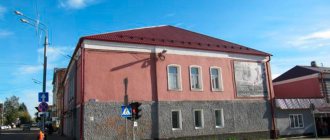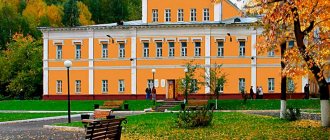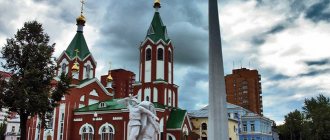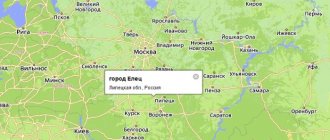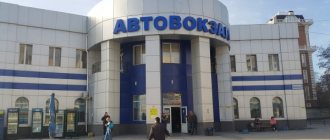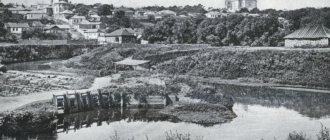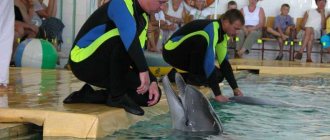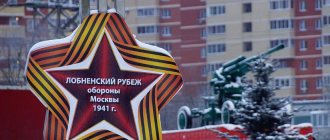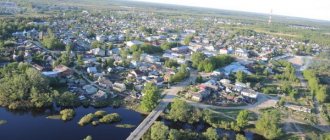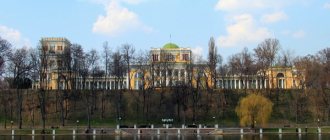Sights and interesting places of Nevel
Nevel is a small administrative center of the Pskov region. The population is about 15 thousand people. Located in the southeast of the Pskov region. Nevel is mentioned in historical documents from 1504 (Ivan the Terrible’s grandfather mentioned him).
In the 15th, 16th and 17th centuries, Nevel was repeatedly part of the Principality of Lithuania, the Polish-Lithuanian Commonwealth and again returned to Russia.
It finally became part of Russia in 1772. Until 1773, Nevel was considered not a city, but a “town”. In 1773 it was transformed into a city. In the 17th century it was part of various provinces.
Trinity Church
Trinity Church is the main place to visit for townspeople and visitors. The temple was built in the middle of the 19th century. During this time, the church has changed greatly. A refectory and a bell tower were attached to the building.
There are no bells in the church. This amazing place is worth visiting first!
Location: Commune Square - 2.
Museum of the History of Nevel
A postal station was built back in the 19th century. Then, at the end of the 20th century, a museum was opened here. Over the years of Nevel's history, many events have happened. The museum has a hall of peasant life. A panorama telling about the war in 1941-1943 is widely presented. You will be able to find out significant events of the city. This is a complete source of information about this place from A to Z.
Location: Lenin street - 14.
* Historical information about Nevel
View hotels in Nevel on Booking.com =>>
Information about Nevel from 1906: city area 210 dessiatinas, 10 alleys, 28 streets, 6 squares, 232 stone houses, 1222 wooden houses, 1 hospital, two libraries, 9 lower educational institutions (6 men's), 6 hotels, 10 factories and factories. There is no running water, the city streets are illuminated by 110 kerosene lanterns.
In 1910, the city had 4 Orthodox churches, 3 Orthodox chapels, 15 synagogues and one Catholic church.
In 1930, all religious churches were closed. During the Great Patriotic War, the city was under enemy occupation for a long time and was destroyed almost to the ground. Thus, the war became the main reason why the city lost its historical appearance. It became part of the Pskov region in 1957.
Museum-Estate of Sofia Kovalevskaya
Having driven only 37 km from the town of Nevel, we will find ourselves in the village of Polibino. There is a museum there in a picturesque estate. A girl, Sophia, lived in this house with her parents. Due to the fact that there were problems with wallpaper for walls at that time. And the parents covered the walls of the nursery with sheets of algebra formulas.
The girl stood in her crib, looking at the theorems. Later the girl became the great Sofia Kovalevskaya. Of course, you know everything about it, or at least heard of it. But now you can get to know the immortal history in person.
NEVEL
NEVEL, a city in Russia, in the south. parts of the Pskov region, center of the Nevelsk district. Us. 15.9 thousand people (2012). Located in the north and north-east shores of the lake Nevelskoye, on the river. Emenka, 18 km from the border with Belarus. Railway junction lines (within the city limits - 2 stations). The federal highway St. Petersburg - Pskov - Pustoshka - Nevel - the border with Belarus (border crossing Lobok - Ezerishche) passes through N.
Nevel. Postal station. Photo. 1890s Archive of T. N. Zhukovskaya
The Nevlya volost was first mentioned in the will of Vel. book Moscow Ivan III Vasilyevich (1503). The N. fortress probably arose in the 1530s, during the period of another aggravation of relations with Vel. Prince of Lithuania, in the 1550s. the fortifications appear to have been renovated. Since 1556 it has been referred to as New Town on the Nevle or Nevlya. Russian stronghold troops during the Livonian War 1558–83. In Aug. 1562 the surroundings of N. were devastated. troops, a detachment came to the rescue under command. book A.M. Kurbsky was defeated in the vicinity of N. near the lake. Callous. In 1563, during the Polotsk campaign of 1562–63, Tsar Ivan IV Vasilyevich the Terrible stayed in Nizhny Novgorod. In 1564 and 1566 the city suffered from a plague epidemic. In 1580 it was besieged by the Polish-Litovs. troops and soon surrendered. According to the Yam-Zapolsky peace of 1582, Rus was returned. state-woo Polish-Litovian occupied again. troops in 1617 during the Polish-Lithuanian Commonwealth intervention of the early 17th century, according to the Deulin truce of 1618 it became part of the Polish-Lithuanian Commonwealth. In 1623 he received Magdeburg law. In 1632, during the Russian-Polish War of 1632–34 was occupied by detachments of residents who were located nearby Toropets and Velikie Luki, according to the Polyanovsky Peace of 1634 it was returned to the Polish-Lithuanian Commonwealth. In 1654 after the beginning of the Russian-Polish war of 1654–67 Russian was taken. troops under command. V.P. Sheremetev, according to the Truce of Andrusovo in 1667, remained part of the Rus. state In 1678 according to the 3rd Moscow. Resolution to the Treaty of Andrusovo Rus. the state ceded N. (among other cities) to the Polish-Lithuanian Commonwealth in exchange for an extension of the truce for 13 years. During the Northern War of 1700–21, N. was under the control of Russia in 1703–05. troops.
Church of the Descent of the Holy Spirit in the village of Plissa in the suburbs of Nevel. 1747.
In 1772, according to the 1st partition of the Polish-Lithuanian Commonwealth (see article Sections of the Polish-Lithuanian Commonwealth), Nizhny Novgorod became part of Russia. The district town of Pskov (1773–76), Polotsk (1776–96, from 1778 – Polotsk governorship), Belarusian (1796–1802) and Vitebsk (1802–1924) provinces. In 1850, the St. Petersburg – Kyiv highway was built through N. In 1865 and 1895 the city suffered from devastating fires. In the beginning. 20th century traffic is open on those passing through the N. railway. lines Novosokolniki - Vitebsk (1904) and Bologoe - Polotsk (1907).
On Nov. 1917 owl was installed in N. power. In 1918–20 he lived and taught in the city. philosopher and philologist M. M. Bakhtin, around whom a circle of cultural and philosophical figures formed - the so-called. Bakhtin's circle (V.V. Voloshinov, B.M. Zubakin, M.I. Kogan, L.V. Pumpyansky, M.V. Yudina, etc.). They created the Nevelsk scientific. association (1919).
In 1924–27, a district town in the Pskov province. RSFSR. Regional center of Velikoluksky district. (1927–30, 1935–38) Leningrad region. (1927–29), Western region. (1929–35), Kalinin region. (1935–44). In Vel. Otech. Germany was occupied during the war. troops from July 16, 1941 to October 6, 1943. Liberated by units of the Kalinin Front of the Red Army during the Nevelsk offensive. operations. Regional center of Velikolukskaya region. (1944–57), from 1957 Pskov region.
The city was built according to the general plan of 1778. On the cape formed by the bend of the river. Emenka when leaving the lake. Nevel, tree shafts are preserved. fortresses In the city center until the 1930s–40s. located: male Spaso-Preobrazhensky mon. on shopping Red Square. (transferred in 1682 from the abolished Trinity Monastery in the suburbs of N.; Preobrazhenskaya Church, 1725–32); Catholic Church of St. George (1685–1785), Assumption Cathedral (1809; all not preserved). In connection with the construction of the St. Petersburg – Kyiv highway, a postal station complex was erected (mid-19th century; now the City History Museum). Among the surviving buildings are also: 5-domed c. Trinity Life-Giving (founded as a chapel in 1850; a quadrangle with a bell tower was added in 1896), former buildings. women's gymnasium (1906), district treasury, district school (early 1890s), building of the zemstvo hospital (1913–15), residential buildings 19 - early. 20th centuries Chapel of St. Nicholas will fix it. juvenile colonies (2004). Monument to the Hero of the Soviet Union. Union of M. Zh. Mametova, who died near N. in 1943 (1979, sculptor M. Ainekov).
Sewing of outerwear, sportswear and uniforms (sewing association), production of leather shoes (Nevel enterprise), powder fire extinguishers, metal products, etc. Food industry enterprises.
In the suburbs of N., village. Pleats, – wooden. tiered c. The Descent of the Holy Spirit (1747; locally revered Tabyn Icon of the Mother of God). Near N. preserved: in the village. Emenets - ancient settlement - the remains of the border town of the Polotsk principality of Emenets (mentioned in 1185), the estate of the Evreinovs (a park with ponds has been preserved, late 18th - early 19th centuries); in the village Ivanovo – estate of the gene. from cav. I. I. Mikhelson (the Church of St. John the Baptist, 1799–1805, and the park have been preserved); in the village Kanashovo - estate of M. S. Zhukovsky (main house 19th century); in the village Ust-Dolyssy – postal station (19th century), village. c. Vladimir Equal to the Apostles (1998); in the village Stukalovo - c. Vladimir Equal to the Apostles in the spirit of Vladimir architecture of the 12th century. (2001–05, architects V.V. Medvedev, V.I. Snetkov).
Grebnitsky Estate
20 minutes from Nevel it is worth seeing the ruins of the Grebnitsky estate. It is a pity that little remains of the buildings of that time. Currently, only ruins remain of the central house. The outbuildings are also in poor condition. But the butler's house has been restored. Looking at all this, one can imagine the lifestyle of the Russian nobility.
Location: n/a Obol.
Blue Dacha
The name “Blue Dacha” conceals something unusual. This place talks about what happened back in 1941-1943. Horrible events took place in this place - this is a real Jewish ghetto. More than 800 people died at this place; they were shot. Now, in memory of those who died, a memorial obelisk has been erected here. Its installation was carried out by the Jewish community. If you are interested in the history of the Holocaust, you should visit this place.
Linen plant
What makes this region famous is the Linen Factory; it also takes 20 minutes to get there, but this is nothing compared to the emotions that you can experience here. A sailing and paper factory, a magnificent estate - all this was created here in the 18th century by A. A. Goncharov.
Of course, this place gained popularity after the marriage of A.S. Pushkin to N.N. Goncharova took place here. Everything in this place speaks of noble life. And the park at the estate almost completely reflects that time. By the way, sometimes artist exhibitions are held in this park.
Location: Polotnyany Zavod village, Trudovaya street - 1a.
* Main attractions of Nevel
- Museum of the History of Nevel
Located on Lenin Street.
It was opened in 1993. The museum is located in a building that was a postal station in the mid-20th century. The museum presents three exhibitions to the attention of visitors - “peasant and urban life of the 19-20 centuries”, “Nevel in the Great Patriotic War”, “Nevel urban culture of the 19-20 centuries”. The museum also hosts exhibitions of photographers, artists, artisans and private collectors.
Visitors note that the museum is very interesting, but requires immediate major repairs. This is the problem with all small towns.
- Museum-Estate of Sofia Kovalevskaya
The museum is located in the village of Polibino, 37 km from Nevel. Sofya Vasilievna Kovalevskaya is known all over the world - an outstanding Russian woman mathematician, corresponding member of the St. Petersburg Academy of Sciences, professor at Stockholm University. What Sofya Kovalevskaya managed to achieve as a woman in those days was simply fantastic! In addition, she was an outstanding public figure and writer. She moved to Polibino with her father, retired artillery lieutenant general Vasily Vasilyevich Korvin-Krukovsky in 1858. Sofya Vasilievna lived here from 8 to 18 years old.
It is on this estate that the memorial museum-estate of Sofia Kovalevskaya is located. The house (built in the mid-19th century), an outbuilding and a park have survived to this day. The life of this wonderful and extraordinary woman is extremely rich and interesting. The museum managed to collect a large collection of Sophia’s personal belongings and documents.
The exhibition includes clothing, books, original manuscripts and notebooks, charts, portraits, as well as examples of mahogany furniture from the 18th and 19th centuries. There are many documents from Sweden, America and Germany.
Currently, the main house of the estate is being restored, and the museum is located in the outbuilding.
The museum is located in the Velikoluksky district of the Pskov region, the village of Polibino. Open daily, except Saturday and Sunday, from 10.00 to 17.00.
- Grebnitsky Estate
The remains of the estate are located in the village of Obol (in Belarus), 30 km from Nevel. In the first half of the 19th century, this estate was built by Stanislav Grebnitsky. Once upon a time it was a magnificent two-story mansion in the classicist style.
Also in the estate there was a parochial school, a water mill, a distillery and a wood-chemical manufactory. The Grebnitskys themselves were Polish nobles who moved to Belarus.
Alas, a series of events, time, fires and wars did not spare this wonderful estate. Only part of the main building survived. At the entrance to the main building of the estate, massive palace columns supporting the pediment have been preserved. In the surviving sections of the building you can see beautiful cast iron consoles under the balconies and the remains of ornaments on the walls.
On some sections of the walls there are memorial plaques in memory of the fallen underground fighters. The basement of the building is almost everywhere covered with bricks and earth. But in some places there are passages to small semi-basements.
- Linen plant
From Nevel it can be reached in 20 minutes.
This is truly a gem of this place. It is located in the village of Polotnyany Zavod, on Trudovaya Street. There is a sailing and paper mill built in the 18th century by A.A. Goncharov - great-great-grandfather of N.N. Goncharova-Pushkina.
Surprisingly, time has been kind to this magnificent historical monument of architecture.
In 1718, this Linen-Zavodskaya Paper Manufactory was built by decree of Peter 1.
It was in this estate A.S. Pushkin married N.N. Goncharova, which gives the estate special significance and popularity.
For the 300th anniversary of the estate (in 2021), the Buzeon Paper Museum was opened there. The museum itself is housed in an old industrial building from the 18th century.
Also, in 2021, at the Polotnyany Zavod on the side of Kaluzhskaya Street, a monument to the French pilots of the Normandy-Niemen squadron was erected. On the side of Trudovaya Street, a memorial stone was erected in honor of the deployment of Kutuzov’s Russian army in the Goncharovs’ estate.
There is a park around the estate where artists' exhibitions are sometimes held.
- Blue Dacha
This is an infamous Jewish burial ground. Located near Nevel. In 1941-43, terrible executions of Jews took place here. The Germans drove them away from all the surrounding villages. In total, 2,000 executed Jews - old people, women and children - are buried here.
Before the revolution there was a dacha area here. Among all the dachas was the dacha of the police chief. The police officer's house was painted blue. Hence the name of the Nevelsk ghetto.
The memorial monument was erected by the Jewish community.
In Nevel you can also see the building of the former gymnasium (1904), where the famous philosopher M. Bakhtin taught. It is well preserved and now houses a college.
Many tourists find it interesting to visit the village of Gorbenki, where the Swiss Milk farm is located. Surprisingly, the farming here is actually done by a Swiss family. Her story will be interesting to you.
See Prices on Booking in Nevel =>>
Farm "Swiss Milk"
Are you interested in ecotourism? Then you won’t be able to pass by the wonderful place “Swiss Milk”. It will take a little more than 15 minutes to get to this place. This place is attractive because it is steeped in the history of a Swiss family who farmed in this region. You can have a blast on a tractor and taste the products that farmers produce.
Location: Gorbenki village.
Eyewitnesses of the terrible accident near Nevel are sure: the road was covered with an ice crust!
The tragedy was confirmed to me on the same day at the State Traffic Safety Inspectorate of the Pskov Region:
“At about 9 o’clock, on the 188th kilometer of the Olsha – Velizh – Usvyaty – Nevel highway, the driver of a Lada Largus car, a man born in 1960, lost control at a curve in the roadway,” the department’s press service reported. – As a result, he made a side collision with a Mercedes Benz moving towards him with a Vielton trailer, driven by a man born in 1989.
According to unconfirmed reports, the driver of the car flew through the windshield and died on the spot before paramedics arrived. The driver of the truck, in a state of shock, was taken to the hospital.
According to local residents and eyewitnesses, the cause of the accident could well have been the unsatisfactory condition of the highway.
“I was taking my daughter to Nevel just at that time, and the road, I’ll tell you, was pure ice,” recalls Dmitry M., one of the eyewitnesses whom I found through a social network, in a conversation with me. “I was returning back just when this terrible accident happened. Employees of the Ministry of Emergency Situations and the Traffic Police had already arrived, the truck was on the road, and there was a car in a ditch with water. I stopped and asked the police if everyone was alive, and they shook their heads.
According to Dmitry, whether by accident or not, after this accident they began to sprinkle the road with reagents. Involuntarily it turns out: until the thunder strikes?..
“The road there is in such a condition that you can drive 30 kilometers per hour alone and still kill yourself,” Ekaterina, one of the local residents, tells me next online. – The pits are huge, they are always not cleaned, not sprinkled. I raised this issue a week ago, even directly addressed the regional authorities online, but there was no response from anyone.
“Nobody cleans the roads, but taxes are rising...” wrote one of the sons of the deceased Lada Largus driver in a local group. Apparently, the relatives are also inclined to the version that the road was “killed” on this section.
On Monday, December 6, I tried to contact the relatives of the deceased online, but alas... They are in great grief and now clearly have no time for communication. I managed to establish through social networks that on that fateful day, 61-year-old Vladimir KOVALYOV, a resident of the city of Nevel, died in this terrible accident.
“Many people in our city know this wonderful family,” Victoria, a resident of Nevel, whom I found on VKontakte, told me. “The wife of the deceased works as a primary school teacher, they raised two wonderful sons. Vladimir himself was law-abiding and very careful in everything; he did not like driving fast. As family acquaintances clarified, that day Vladimir was returning from Usvyat and did not reach home by just a couple of kilometers.
“I used to work with his son in Usvyati, and he very often picked us up and drove us home from work,” says Alexey, an acquaintance of the deceased. “That day he took his son to work in Usvyati and was returning home. I still don’t believe that this could happen. He was a wonderful man! He never refused any help to anyone, he was simply a good man, a wonderful and loving husband and father.
Who would have known that the path from Usvyat, familiar to the residents of Nevelsk to the slightest turn - some 60 kilometers away - would be the last for one of the law-abiding townspeople?! Perhaps, at least after this tragedy, the authorities and employees of the road department will pay attention to the condition of this highway?
Victoria BELOUSOVA,
Nevelsky district
FROM THE EDITOR: Correspondents of the newspaper "KrЪ" express sincere condolences to the family of the deceased. Take care of yourself and your loved ones!
